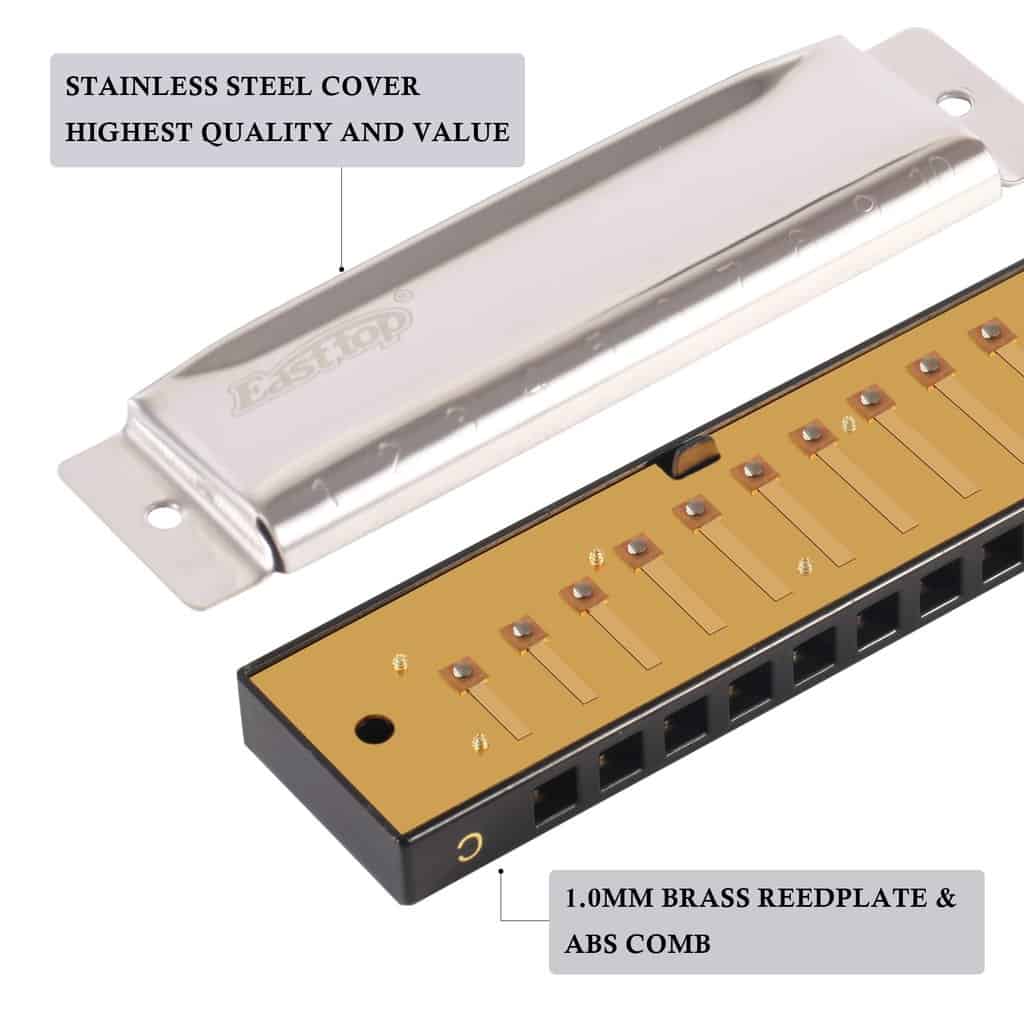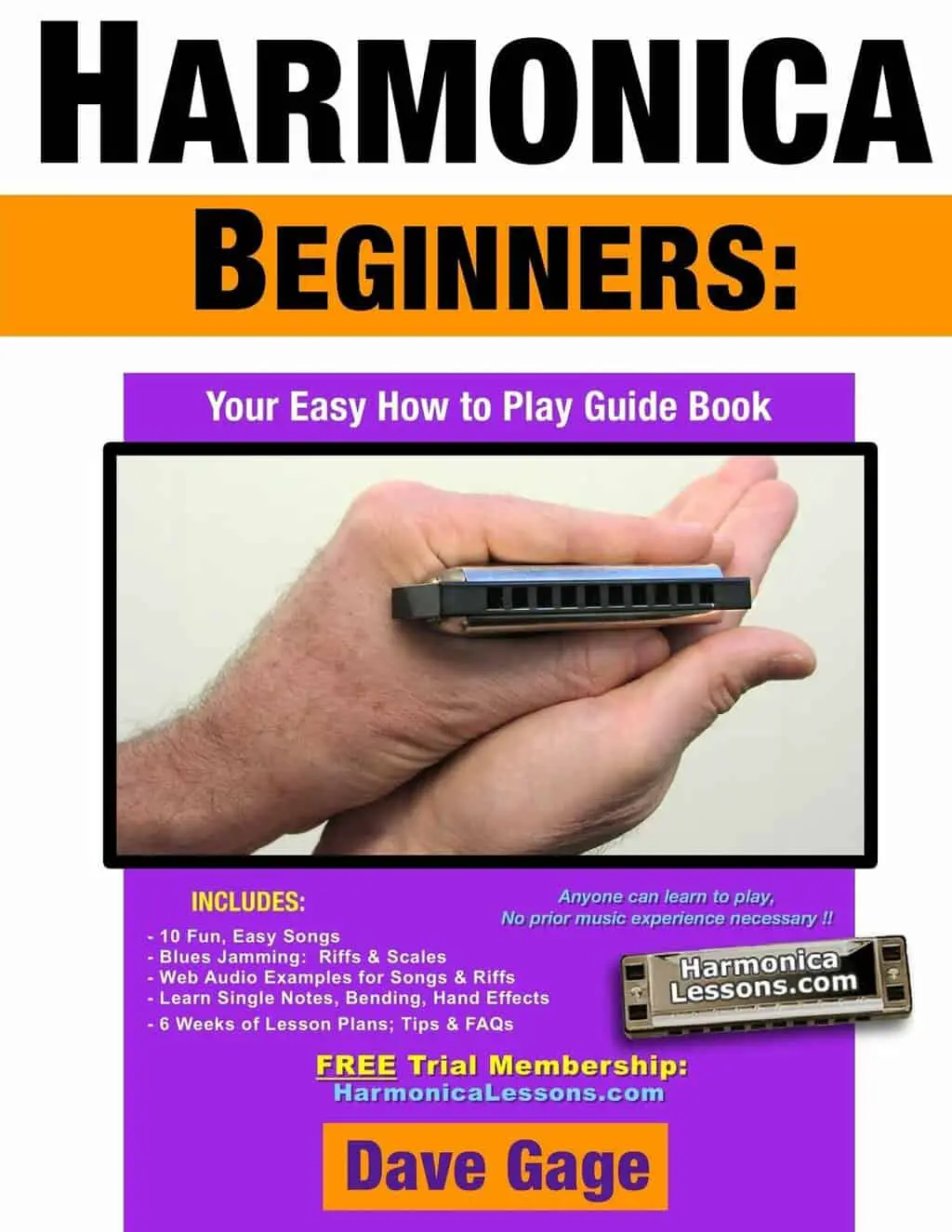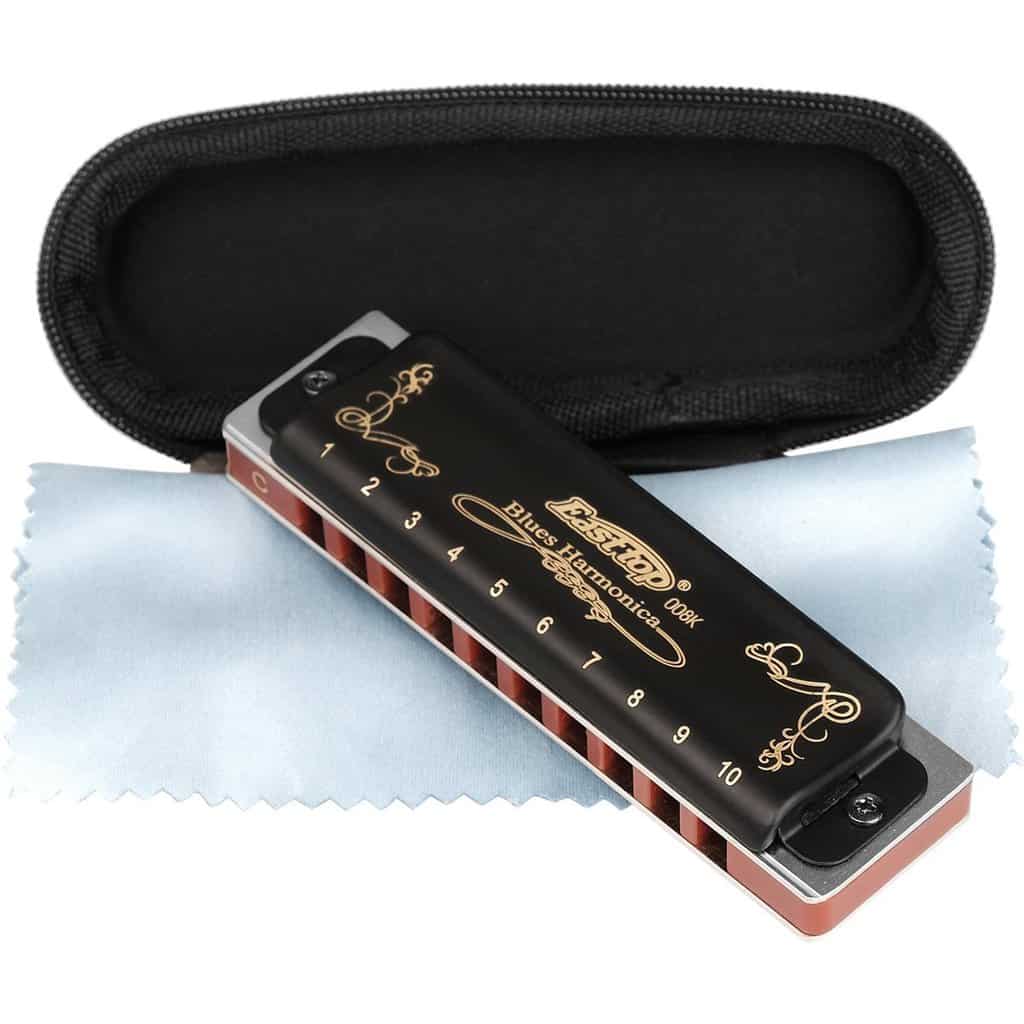If you’ve been curious about how to play the harmonica 10 holes, then look no further! This beginner’s guide will help you learn the sweet sounds of the 10-hole harmonica. With just a few simple steps, you’ll be able to master the instrument and make beautiful music. So get ready to start jamming with a 10-hole harmonica!
Benefits of Learning to Play the Harmonica
| Benefit | Description |
|---|---|
| Improve Cognitive Skills | Learning to play the harmonica can help to improve cognitive skills such as memory, concentration, and understanding of musical structure. |
| Develop Motor Skills | Playing the harmonica helps to develop motor skills, as the player must manipulate their lips, tongue, and breath in order to produce the desired sound. |
| Stress Relief | Playing the harmonica can be a great way to relax and reduce stress levels. The act of playing can be calming and therapeutic. |
| Social Skills | Learning to play the harmonica can help to develop social skills, as musicians often collaborate with each other to create music. |
| Portability | The harmonica is a small, portable instrument that can be used wherever you go. It is easy to carry and does not require any additional equipment. |
| Affordability | The harmonica is an inexpensive instrument that is relatively easy to learn. There are many different models available to suit all budgets. |
Playing the harmonica can be an enjoyable and rewarding experience, and learning to play can provide many benefits. It can help to improve cognitive skills such as memory, concentration, and understanding of musical structure. Playing the harmonica also helps to develop motor skills, as the player must manipulate their lips, tongue, and breath in order to produce the desired sound. The act of playing can also be calming and therapeutic, providing a great way to relax and reduce stress levels. Additionally, learning to play the harmonica can help to develop social skills, as musicians often collaborate with each other to create music. Finally, the harmonica is a small, portable instrument that is easy to carry and does not require any additional equipment, making it an affordable option for aspiring musicians.
Types of Harmonicas
Harmonicas are available in a variety of different types, each with its own unique sound and style. The most common types of harmonicas are diatonic, chromatic, tremolo, octave, and bass.
Diatonic harmonicas, also known as blues harps or folks harps, are the most popular type of harmonica. They have 10 holes and are designed to play the notes of a single key. Diatonic harmonicas are best suited for traditional blues, rock, folk, and country music.
Chromatic harmonicas feature 12 or 16 holes and are designed to play all of the notes in any key. Chromatic harmonicas are popular in jazz and classical music. They are also often used in pop, rock, and country.
Tremolo harmonicas feature two reeds per note, producing a vibrato effect. They are commonly used in folk and traditional music.
Octave harmonicas are similar to diatonic harmonicas, but they have twice as many reeds. This allows them to produce two notes per hole, one an octave higher than the other.
Bass harmonicas are the largest type of harmonica. They feature a wide range of notes and octaves and are designed for low-pitched notes. Bass harmonicas are often used in blues, jazz, and classical music.
Parts of a Harmonica
A harmonica consists of two components: the comb and the reeds. The comb is the outer frame of the instrument and the reeds are the metal plates that vibrate to create the sound. The comb has multiple air chambers, each of these chambers contains two reeds for each hole. The two reeds are of different lengths and are tuned together. When the reeds vibrate, they cause the air in the chamber to vibrate and produce the sound. The comb also contains the holes that the player blows and draws through to create the sound.
Mouth Position and Breath Control
Using the right mouth position and breath control are essential for learning to play the harmonica. To produce a note, the player must press their lips against the harmonica’s holes and blow or draw air. For a full, rich sound, the player should keep their mouth close to the harmonica’s holes and form a tight seal. The player should also avoid making a clicking sound with their lips as they play. To control the volume and tone of the notes, the player should adjust the amount of air they blow or draw into the harmonica. By controlling the breath, the player can create a range of sounds from soft and mellow to loud and powerful. Additionally, the player should use a consistent breathing pattern to create a steady rhythm. With the right mouth position and breath control, the player can create a beautiful, harmonious sound.
Basic Techniques for Playing the Harmonica
The harmonica is a versatile instrument with a wide range of sounds and playing techniques. Here are the basic techniques you need to know to get started playing the harmonica.
1. The Tongue Block: This is the most basic technique used when playing the harmonica. To do this, place your tongue up against the reed, blocking the air from passing through. This will then produce a single note.
2. The Draw: A draw is a technique used to produce a note on the harmonica. To do this, inhale while blocking the air from passing through the reed with your tongue. This will create a note.
3. The Blow: The blow is a technique used to produce a note on the harmonica. To do this, exhale while blocking the air from passing through the reed with your tongue. This will create a note.
4. Vibrato: Vibrato is a technique used to add expression to the harmonica. To do this, you will vibrate your tongue back and forth against the reed while playing a note. This will create a wavering, vibrating sound.
5. Octaves: Octaves are a technique used to produce two notes at once on the harmonica. To do this, you will need to produce a note with your tongue and then blow or draw a second note at the same time. This will create two notes at once.
6. Bending: Bending is a technique used to add expression and create a bluesy sound on the harmonica. To do this, you will need to start on a note and then you will need to draw or blow the note while slowly lowering your tongue. This will create a sound that is lower in pitch than the note you started with.
7. Overblowing: Overblowing is a technique used to produce higher notes on the harmonica. To do this, you will need to start on a note and then you will need to draw or blow the note while gradually increasing the pressure of your breath. This will create a sound that is higher in pitch than the note you started with.
These are the basic techniques you will need to know to get started playing the harmonica. With practice, you will be able to master these techniques and create beautiful music with your harmonica.
Playing Songs on the Harmonica
- Learn to blow and draw notes on a 10-hole harmonica. Draw notes produce a deeper sound than blow notes.
- Breathe in sharply through the harmonica to make a “tongue” sound. For a better sound, practice breathing in through the side of your mouth to make the sound crisp.
- Listen to songs and figure out what notes are being played. Start with simple songs that have only a few notes.
- Practice the song by playing the notes one at a time. Be sure to alternate between blowing and drawing the notes.
- Start off playing slow and gradually increase the speed as you get more familiar with the song.
- Once you feel comfortable playing the song, practice moving between different notes quickly.
- Repeat the song until you can play without making any mistakes.
- Once you feel comfortable with the song, practice playing it with different rhythms.
- Put all of your skills together and play the song with a band or with friends.
Care and maintenance of the harmonica
- Clean the harmonica after each use with a soft cloth or brush.
- Ensure that the harmonica is kept at room temperature and away from direct sunlight.
- Check for any clogged holes or any other signs of damage.
- Do not use any water or other liquids to clean the harmonica.
- Lubricate the reeds and springs occasionally with a dry lubricant.
- Change the reeds as needed.
- Check the mouthpiece for any cracks or other signs of wear.
- Store the harmonica in its original box or in a hard case.
- Inspect the harmonica before playing and make sure all the parts are in good working order.
- Replace any parts that are worn or damaged.
Troubleshooting common issues
- Problems with air flow: If you are having problems with air flow, ensure that your lips are completely sealed around the mouthpiece and that you are not pushing too hard. If the problem persists, try wetting your lips or adding some saliva to the mouthpiece.
- Sound issues: If the sound coming out of the harmonica lacks clarity or is too quiet, check that the reeds are in good condition and that they are not clogged. If they are, you may need to replace them.
- Trouble playing certain notes: If you’re having difficulty playing certain notes, ensure that you are using the correct embouchure for that note and that your mouth is in the correct position.
- Slurring or fast runs: If you are having difficulty playing fast runs or slurring, practice slowly and gradually increase your speed.
Frequently Asked Questions
What type of harmonica should I use for 10-hole playing?
For 10-hole playing, a diatonic harmonica is generally recommended. Diatonic harmonicas are the most popular and commonly used harmonicas as they are designed to play in a specific key. 10-hole diatonic harmonicas are available in all keys, so you can choose the key that is most suitable for your song. Additionally, they are relatively inexpensive, making them an ideal choice for beginners.
Can I start playing the harmonica 10 holes without any prior experience?
Yes, it is possible to learn to play the harmonica 10 holes without any prior experience. The first step is to familiarise yourself with the instrument by learning the basics such as how to hold the harmonica, which notes correspond to which holes, and the basics of playing techniques like blowing, drawing, and bending. With practice and dedication, you can start playing simple songs and tunes.
How can I develop proper embouchure for 10-hole harmonica playing?
To develop a proper embouchure for 10-hole harmonica playing, it is important to ensure that the harmonica is held firmly in place with the lips and the mouth is properly sealed around the harmonica. The lips should be relaxed but not too tight and the jaw should be slightly open. The tongue should be used to control the air flow, shaping the sound. It is also important to practice blowing and drawing in a steady rhythm, with the breath being pushed through the harmonica to create the desired sound. As practice progresses, the player should be able to develop a technique that produces the desired sound with more control and finesse.
What techniques should I use to play 10-hole harmonica melodies?
To play 10-hole harmonica melodies, the most important technique is to learn the layout of the harmonica. Once the layout is learned, players should practice playing single notes and eventually progress to playing multiple notes. This will help develop the ability to play melodies. Additionally, it is important to master tonguing, bending, and vibrato techniques. To do this, players can practice exercises and practice playing along with existing melodies. Finally, to be able to create melodies, it is helpful to have knowledge of music theory and use of scales.
What tips can I use to help me play 10-hole harmonica faster?
Practice regularly with a metronome to increase speed. Break down complex pieces into smaller sections and practice each section separately. Play with a backing track to increase speed and accuracy. Use scales and other exercises to increase dexterity. Vary the tempo and practice with different rhythms. Use a recorder to track progress. Experiment with different breathing techniques. Experiment with different bends and vibratos. Listen to recordings of professional harmonica players to help increase speed.
Conclusion
Now that you have a better understanding of the 10-hole harmonica and how to play it, you can start exploring different techniques and playing styles. Taking time to practice and experiment with different notes, chords, and rhythms will help you to develop your skill and create some truly memorable music. With a bit of effort and perseverance, you can master the sweet sounds of a 10-hole harmonica and become an amazing player.







